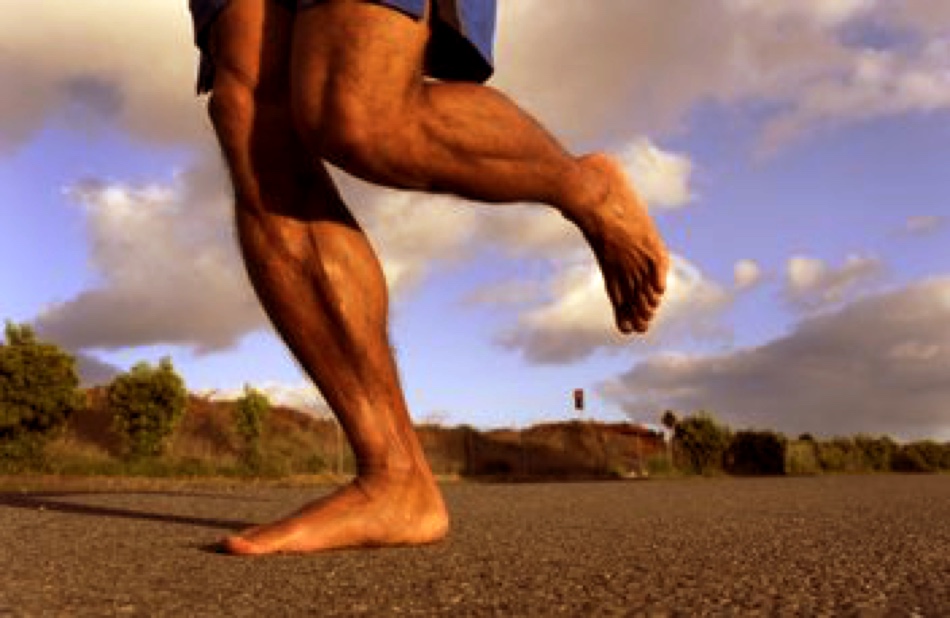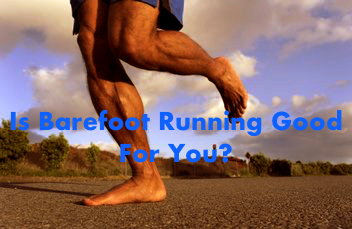
Is Barefoot Running Good For You?
Table of Contents
For many years now the question has been in the air, and a definitive answer I feel has eluded us. The release of Chris McDougall’s book Born to Run didn’t help matters either. The revolution the book brought on changed the way we all think about the biomechanics of running, gait and stride to name a few things. But the big elephant in the room has been the answer to the question:
Is barefoot running good for you? Barefoot running like all other running forms is neither good nor bad, it is a function of use or overuse. Whichever running style you choose, if you overdo it, then it could lead to you getting injured. Make sure you run barefoot within your capabilities with moderation and will be fine.
Of course, this may look like a simplistic answer, but on a more detailed look, you will find that it makes absolute sense. There are many arguments for and against it, I am aware but let’s give it a closer look.
In the not too distant past, the internet was awash with the new thing which was barefoot running.
I have written about the rise in popularity of barefoot running read up on it here and goes into details as the early origin of barefoot running from ancient times all the way to modern day.
Is Barefoot Running Good For You?
As I said earlier the short answer is, it depends on the context without which the questions Is meaningless.
To effectively answer that question I find that you will need to ask a few more:
- Good how?
- Good for who?
- In what context?
But let’s go into a little more detail to give more context here, I think it is worth mentioning that it’s all about the foot striking pattern and volume of work.
How Barefoot Running Works
What is foot Striking?
Foot Striking is how your feet hit the ground when you run.
We have two main types:
- Heel Strike
- Forefoot Strike
Heel Strike: This is the dominant foot striking pattern for individuals that wear cushioned sole shoes.
It’s essentially the landing with the jarring of the heel into the ground with each stride as you run.
The striking pattern is well documented and laid out in my other article answer the question if humans are meant to be barefoot here.
Forefoot Strike: The forefoot strike is prevalent in individuals that run barefoot or in minimalist shoes. The ancient remote tribes from Mexico to eastern Africa still do it till today. It is landing of the ball of the feet while running, lightly touching the ground with a quick turnover of foot speed.
What Does This All Mean?
Well, science has shown that when you heel strike as you run you are more prone to injury dependents on the volume of running. You have the substantial cushioning on the heel of the shoes to help absorb the impact of heel striking. Most of the population run this way, and the body has adapted accordingly to that running style.
The flipside is barefoot running or running in barefoot shoes. An often overlooked fact is that barefoot running recruits a different set of muscles for it to be safe, effective and fun. You will need stronger feet because your feet a not as supported as they are in a traditional shoe. The chances are that if you are venturing into barefoot running, then this has been the case.
I wrote an article about barefoot drill you can do to get your feet stronger check it out here. Just choose a few and work with them.
The next thing is that barefoot running, and specifically, forefoot striking requires that you have significantly stronger calves. This, added to the stronger feet we just mentioned will give you the complete package needed to transition into the shorter stride pattern and quicker cadence of barefoot running.
Volume Of Running
This is the number one area where folk get into trouble. Trying to do volumes of running their body is not trained for, accustomed to, or capable of is a recipe for running into issues.
Irrespective of how we choose to run, (with shoes or barefoot) the volume of work we put in either way can lead to injury.
So here is what I suggest:
- Start slow: Baby steps, use the common sense approach no matter how liberating barefoot running feels. Build up slowly.
- Do your foot drills: Get your feet and calve stronger and up to the task.
- Plan your runs: Map out your runs and build incrementally based on your overall goals. If you are building up to a 5k, then 500m and 1000m runs are your starting point on a regular basis. Do this till you get to your final goal of a 5k.
- Know your body: Know when to call it a day don’t over do it no matter how tempted you feel. Your body is good at giving you signs that it has had enough. Listen to it. Recovery from soreness can set you back, and it sucks.
The Argument For Running In Traditional Shoes
I have met many a runner in the gym who run like the wind and have absolutely no issues running in heeled trainers whatsoever. So that then begs the question why change if there is no need for change. Since you are not having any issues, what is the case for the change to barefoot shoes? Technically speaking. However, running shoes in their current form have only bee around since the 1970s. Does that mean the flat shoes and sandal-shod feed of the earlier era were getting something wrong?
The Argument For Running Barefoot Or In Barefoot Shoes
Barefoot advocates are of the opinion that we are better off moving back to the way we were designed to function. This would be for us to move and run barefoot or in barefoot shoes. The counter-argument is that humans are now a lot heavier than they were millennia ago, and the premise may no longer apply to the modern age.
Our ability to adapt over thousands of years and run across the savannahs to hunt big game in groups or teams is also used as a point of reference.
My thoughts on that are that we are indeed heavier, but have we evolved that quickly to account for the increase in weight? One could argue that this is a relatively new phenomenon of modern times that has been since the 1970s.
Based on that then I would say that our bodies can indeed function and move barefoot with relative ease if we do choose to do so.
We also have the concern for all the hazards that lurk underfoot. The question of how broken glass, nails and screws are navigated always get raised. According to Dr Daniel Lieberman, the foot can withstand all these hazards if we choose to take the time to allow the feet to get calloused enough to do so. Once you have done that, then the roughest terrain will be no problem at all.
If however, that is not quite your thing, then barefoot or minimalist shoes are the answer for you. There are many styles and type to choose from so you are indeed spoilt for choice. I have written quite a few other articles about this, check them out here.
Wrap Up
I saved this bit for last so we could bring it all together. Is barefoot running good for you? It depends on what good means to you. Good, getting stronger feet? Good, better distances? I could go on, but good will have to be in your context of good.
Then we have good for who. Ask yourself a series of questions. Have you been running previously? Can you run? Do you know how to run barefoot? Have you run in restrictive shoes all your life and want to try this? Based on the answers to this then you can choose the next course of action.
Context is a little harder, so let’s go with a simple example: You are relatively fit and mobile, and you understand the differences between heel striking and forefoot striking. You have decided you want to run in barefoot shoes and have been doing the drill from my other articles.
The chances are that you will quickly get into the groove of barefoot running, you won’t overdo it, and you will have a whale of a time in the process to boot. You will be in better touch with the earth understand your body better, and more importantly will be able to use the barefoot running experience as a tool to assist you in more specific sport related activities or pursuits.
In all of this anyway, make sure you consult your medical caregiver as I am not a doctor. Common sense should prevail in all instances.
As always enjoy the journey Barefoot running is a lot of fun if you do it right and don’t do too much more than your body can handle.
